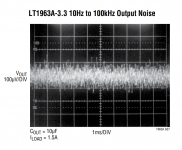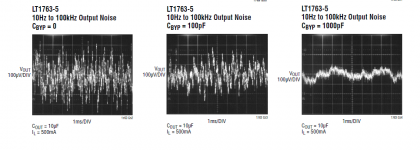Depends on how the scope 'measures'. Do you do a measurement using the cursors, or does the scope calculate it internally?I have a FY6900 signalgenerator,and if I set it to 2v out the Siglent SDS1202x reds 2,16v.If I messaures the signal with the DMM i get 0,700 vRMS =1,974v P-P,Is it safe to say thet the scope messaures to much then?
Jan
Will work nicely, would suggest two 1,000uF caps in series for C1 with similar polarity connected to form a non-polar cap. Might also want to clamp the input with a pair of 1N4148 or 1N914 diodes.I have this halfbuilt messauring amp on my todolist.
https://tangentsoft.net/elec/lnmp/
Note as well that the input impedance in ~100 Ohms
Our Tek scopes at work have an internal calibration routine you're supposed to run periodically. The official interval seems to be never, so I try to do this whenever I use one. I think it reduces offsets and probably tweaks some other stuff. You want the scope well warmed up before doing this.
Our Tek scopes at work have an internal calibration routine you're supposed to run periodically. The official interval seems to be never, so I try to do this whenever I use one. I think it reduces offsets and probably tweaks some other stuff. You want the scope well warmed up before doing this.
Same with the Siglent in question. It's called "self cal" and lasts a few minutes but the scope has to be warmed up indeed. room temperature is also important. However, you still get some errors in measuring exact voltages.
I am trying out the measurement amp.I am trying it on 4 regulators,heres the regulators from best to worst.

And the winner is :

A cheap ebay shunt regulator...
The result:
LM317/3337 reg :0,00024v
Ebay reg 2 with leds:0,00006v
Quanghau shunt: 0,00003v
Ebay shunt Winner :0,000004V
Hope I got it all right.
I calibrated the amp to my scope so it is to be taken with a grain of salt,but at least I can se the noise of the PSU´s.
And the winner is :
A cheap ebay shunt regulator...
The result:
LM317/3337 reg :0,00024v
Ebay reg 2 with leds:0,00006v
Quanghau shunt: 0,00003v
Ebay shunt Winner :0,000004V
Hope I got it all right.
I calibrated the amp to my scope so it is to be taken with a grain of salt,but at least I can se the noise of the PSU´s.
I learned sommething today to...
That the gear and the regulator should stay on a while before measuring...
That the gear and the regulator should stay on a while before measuring...
Assuming this is a broadband measurement, what was the measurement bandwidth?I am trying out the measurement amp.I am trying it on 4 regulators,heres the regulators from best to worst.
View attachment 1058265
And the winner is :
View attachment 1058266
A cheap ebay shunt regulator...
The result:
LM317/3337 reg :0,00024v
Ebay reg 2 with leds:0,00006v
Quanghau shunt: 0,00003v
Ebay shunt Winner :0,000004V
Hope I got it all right.
I calibrated the amp to my scope so it is to be taken with a grain of salt,but at least I can se the noise of the PSU´s.
Jan
One more question,on the horizontal knob how many uS should i set it?
the lesser uS the less noise I get on the scope.
the lesser uS the less noise I get on the scope.
But the same noise per second, right?the lesser uS the less noise I get on the scope.
Even 10 and 12-bit scopes rarely go below 1 mV/div. Some do go lower like 0.5 at lower bandwidth settings etc.Do you know any scopes that go down to 100uV/div?
A couple of points on measuring noise gleaned from doing it for customers for 30 years:
1. Start with proper scope probe technique which means not using the ground clip lead ever, like this.
2. If you want to measure the output noise of a really low noise regulator, the sadly departed Jim Williams showed the way with App Note 83. After his death Todd Owen picked up the ball and App Note 159 has a somewhat improved circuit with 80 dB of gain and 150 nV RMS noise floor. The circuit in Figure 2 is a real challenge to build. Start with a nice big tin of cookies.
3. A simple way to determine if a noise waveform is due to the AC mains is to use line triggering on the scope. The part of the waveform that stands still is due to the mains, the part that moves isn't.
1. Start with proper scope probe technique which means not using the ground clip lead ever, like this.
2. If you want to measure the output noise of a really low noise regulator, the sadly departed Jim Williams showed the way with App Note 83. After his death Todd Owen picked up the ball and App Note 159 has a somewhat improved circuit with 80 dB of gain and 150 nV RMS noise floor. The circuit in Figure 2 is a real challenge to build. Start with a nice big tin of cookies.
3. A simple way to determine if a noise waveform is due to the AC mains is to use line triggering on the scope. The part of the waveform that stands still is due to the mains, the part that moves isn't.
- Home
- Design & Build
- Equipment & Tools
- Trying to measure noise With Siglent scope

